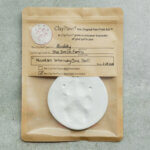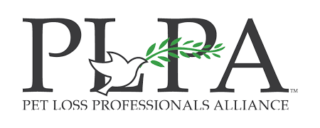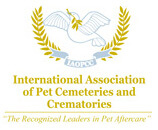This is Part 6 of our Support Protocols for 14 Common Situations series. The cases described in this series are drawn from everyday scenarios found in general veterinary practice or emergency and specialty practices. Below you’ll find an example of a type of case you’re likely to encounter in practice. This blog’s subject is a case involving a client’s emotional response to pet loss. Situation: Emotional Response to Pet Loss One of your clients, Mary, sits in your exam room crying softly as you talk to her. You’ve just given her the news that her Basset hound, Freddie, has cancer…. Continue Reading
Blog
In-Home Euthanasia
In 2021, we had our senior dog Nova euthanized due to her Cognitive Dysfunction Syndrome diminishing her quality of life. Having an in-home euthanasia veterinarian come to us meant she could stay in the one environment that was still familiar to her. Knowing she wasn’t stressed and confused in her last moments made the healing process significantly easier for me. I’ll forever be grateful for that resource. Being able to stay home during the euthanasia process provides privacy for grief that a lot of people prefer. Not to mention a stress-free environment for their pet. Psychotherapist and Thanatologist, Andrea Warnick… Continue Reading
Rainbow Bridge Remembrance Day
In your profession, and maybe as a bereaved pet parent yourself, you are likely familiar with the “Rainbow Bridge”. A touching poem which talks about what is believed to be a connection between heaven and earth. A place where our once sick or old pets are made new and wait to be reunited with us. Because of its words of comfort and hope, this poem has become a condolence standard in many veterinary practices. August 28th is Rainbow Bridge Remembrance Day. A day dedicated to honoring the pets we have lost. A day that a lot of pet parents reflect… Continue Reading
Offering Condolences
Offering condolences and creating keepsakes are standard practices in most veterinary clinics today. Reaching out to clients after their pet dies is not only a sign of compassion, it is also a wise business practice. For one reason or another, a significant number of clients do not return to a veterinary practice after their pet dies. However, a friendly, concerned contact after the death of a pet can break through this avoidance and denial aspect of grief. It may help to reassure clients that you understand their loss and will welcome them back at any time. The vast majority of… Continue Reading
NEW ClayPaws Kit Packaging: Reviews Are In!
Announcing our NEW ClayPaws Kit packaging! We have the best customers. You all love our products and tell us that all the time. But if there is one thing we have heard over and over it’s that you don’t need all the packaging that comes with our ClayPaws Kits. It makes sense. Our packaging hasn’t really changed in 25 years! So, in an effort to keep our kits affordable, reduce material waste, and increase the function of our packaging, we’ve spent the last year working on our new packaging. And, now it’s here! Survey Says! As part of our development… Continue Reading
Viewing A Pet’s Body: Situational Support Protocols
This is Part 5 of our Support Protocols for 14 Common Situations series. The cases described in this series are drawn from everyday scenarios found in general veterinary practice or emergency and specialty practices. Below you’ll find an example of a type of case you’re likely to encounter in practice. This blog’s subject is a case involving a client viewing a pet’s body after death has occurred. Situation: Viewing A Pet’s Body Your client Helen’s long-haired dachshund, Pixie, just died in emergency surgery. You’ve given Helen the news. By now, she’s calmed down a little from the initial shock and… Continue Reading
Bake at Home Bundle
Whether you work in a busy clinic, don’t have access to an oven, or like to allow pet parents the chance to add their own decorations, our Bake at Home Bundle makes the process of sending unbaked ClayPaws prints home with families to bake simple and meaningful. Baking is easy! However, we know some of you may have been curious about air-dry clay because it doesn’t need to be baked. We get it! You’re busy and baking may seem like an unnecessary step. But here’s why it’s not: Air dry clays can shrink up to 15% while drying. Overtime, air… Continue Reading
Kids and Grief
Over three quarters of children in the United States live with pets. According to the Journal of the American Board of Family Medicine, children are more likely to live with a pet than live with their biological father or a sibling. Furthermore, many studies show the benefits pet ownership has on kids. Pets can help reduce stress and help develop social and emotional skills. The bond between a child and a pet is sometimes the first strong bond they establish aside from their parents. As a parent myself, I have been lucky enough to see the bond between a child… Continue Reading













